

Paul Maric
1200hp Ram TRX vs Lamborghini Revuelto drag race
27 Days Ago
The Isuzu D-Max remains a strong seller in Australia, and models like the X-Rider are a key part of why. It's in a sweet spot for ute buyers.



Quickly see how this car stacks up against its competition. Select any benchmark to see more details.
Where expert car reviews meet expert car buying – CarExpert gives you trusted advice, personalised service and real savings on your next new car.
The Isuzu D-Max has broken away from the pack.

Although the Ford Ranger and Toyota HiLux remain the best-selling utes in Australia, the D-Max finished 2023 in a comfortable third on the sales charts. So far in 2024, it’s managed to hang onto that spot.
The D-Max has been a solid ute since launch, but Isuzu hasn’t rested on its laurels. It’s consistently updated the car over the years; first to deal with complaints about turning off its active safety systems, and subsequently to give it a new nose, a new infotainment system, and revised suspension.
On test here is the X-Rider, which combines a tough exterior design with a more pared-back interior than the LS-U or X-Terrain.
That means you miss out on some luxuries, but you’ll also spend less upfront. With a sticker price sneaking in below $60,000 before on-road costs, this undercuts the X-Terrain by more than $10,000 on paper.
Money well saved, or should you dig deeper into your pockets?
On test here is the mid-spec X-Rider dual-cab ute which is now a permanent part of the D-Max range.
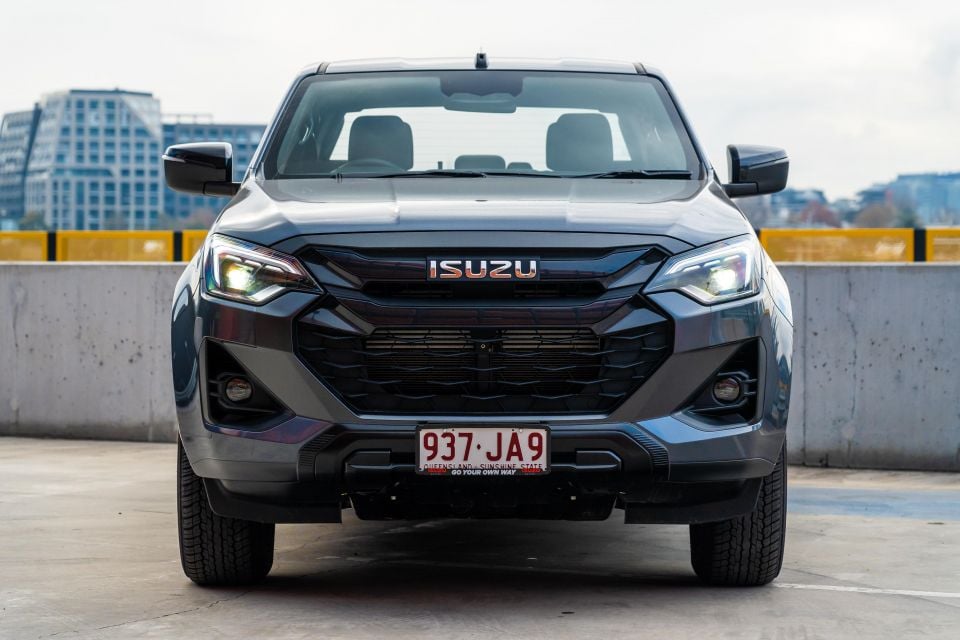
2024 Isuzu D-Max pricing:
| 4×2 | Price before on-road costs |
|---|---|
| SX Single Cab Chassis 1.9L manual | $32,700 ($32,490 D/A) |
| SX Single Cab Chassis 1.9L auto | $34,700 |
| SX Single Cab Chassis 3.0L manual | $34,700 |
| SX Single Cab Chassis 3.0L auto | $36,700 |
| SX Space Cab Chassis 3.0L auto | $40,200 |
| SX Crew Cab Chassis 1.9L auto | $41,200 |
| SX Crew Cab Ute 1.9L auto | $42,700 |
| SX Crew Cab Chassis 3.0L auto | $43,200 |
| SX Crew Cab Ute 3.0L auto | $44,700 |
| LS-U Crew Cab Ute 3.0L auto | $54,500 |
| 4×4 Cab Chassis | Price before on-road costs |
|---|---|
| SX Single Cab Chassis 3.0L manual | $42,700 |
| SX Single Cab Chassis 3.0L auto | $44,700 |
| SX Space Cab Chassis 3.0L auto | $48,200 |
| SX Crew Cab Chassis 3.0L manual | $49,200 |
| SX Crew Cab Chassis 3.0L auto | $51,200 |
| LS-M Crew Cab Chassis 3.0L auto | $54,300 |
| LS-U Crew Cab Chassis 3.0L auto | $61,000 |
| 4×4 Ute | Price before on-road costs |
|---|---|
| SX Crew Cab Ute 1.9L auto | $50,700 |
| SX Crew Cab Ute 3.0L auto | $52,700 |
| LS-M Crew Cab Ute 3.0L auto | $55,800 |
| X-Rider Crew Cab Ute 3.0L auto | $59,500 |
| LS-U Space Cab Ute 3.0L auto | $59,500 |
| LS-U Crew Cab Ute 3.0L auto | $62,500 |
| LS-U+ Crew Cab Ute 3.0L auto | $65,500 |
| X-Terrain Crew Cab Ute 3.0L auto | $70,500 ($67,990 D/A) |
To see how the D-Max stacks up against its rivals, compare it using our comparison tool.
Buy your new car without the stress. It's fast, simple and completely free.

Great service from Travis and team, second time I have used this business would not hesitate to recommend them to anyone
Craig C.
Purchased a Ford Ranger in Sunshine Coast, QLD
CarExpert helped Craig save $7,224 on his Ford Ranger, now let us save you on your next new car.
Get your BEST priceAlthough its fundamentals haven’t changed, Isuzu has done some polishing behind the wheel of the D-Max.

There’s a new touchscreen infotainment system, and dials for volume and tuning in place of the fiddly old switches. Beyond that, this will look familiar to anyone who’s sat behind the wheel of the last car.
That’s no bad thing. There’s just the right amount of bolstering in the seats, although the scalloped-out backrest means there’s not quite as much lumbar support as would be ideal, and everything falls within easy reach.
Isuzu has kept the pop-out cupholders on the outer edges of the dashboard for 2024 – a good thing given the central cupholders swallow a small coffee cup whole, with nothing protruding for the driver to grab onto. Base models miss out, but the X-Rider also gets a split glovebox and a pop-top storage compartment atop the dash.
There’s no soft leather here; even the steering wheel is trimmed in plastic. Although the slightly dour dash and cloth seats aren’t particularly offensive in a commercial vehicle, it feels a bit stingy that Isuzu hasn’t trimmed the wheel in leather.




As is usually the case, this can’t come close to matching a similarly priced SUV for ambience or luxury.
The updated 8.0-inch infotainment touchscreen is excellent when you’re using the wireless smartphone mirroring. Along with the new volume knobs, it has new graphics that are less aftermarketand feel more fitting for a ute with a sticker price around the $60k mark.
At this price, we’d like to see the proper climate control pod from the X-Terrain here instead of the cheap black dials here. Even a low-level Mitsubishi Triton has a more modern setup.
The front USB-A port is now a USB-C unit, although it’s no longer integrated under the dashboard and instead needs to be plugged into the screen housing.
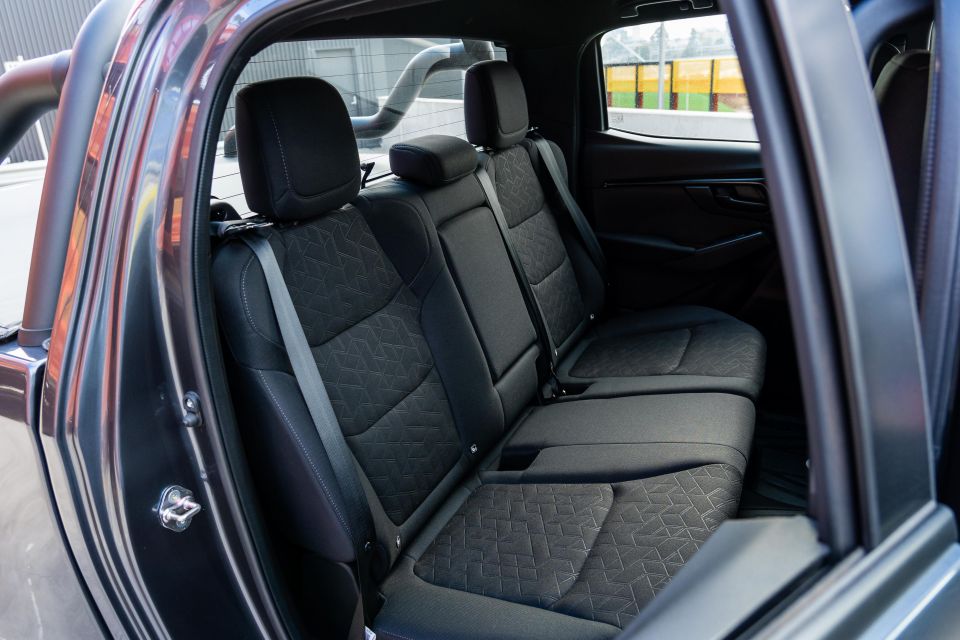

As for the new knobs? Yes, they make life easier if you want to tune the radio or change volume on the move.
In front of the driver is a simple set of analogue dials, between which sits a 4.2-inch colour trip computer display. Along with a digital speedo, it shows information about your off-road hardware, fuel economy, and media.
Rear leg room is par for the dual-cab ute class, as is toe room. There’s plenty of head room back there, and children or troublesome apprentices will appreciate the air vents on hot days.
There are two ISOFIX points and three top tether mounts back there, and the seat bases lift up to free up more space for items you don’t want to slot into the tray.
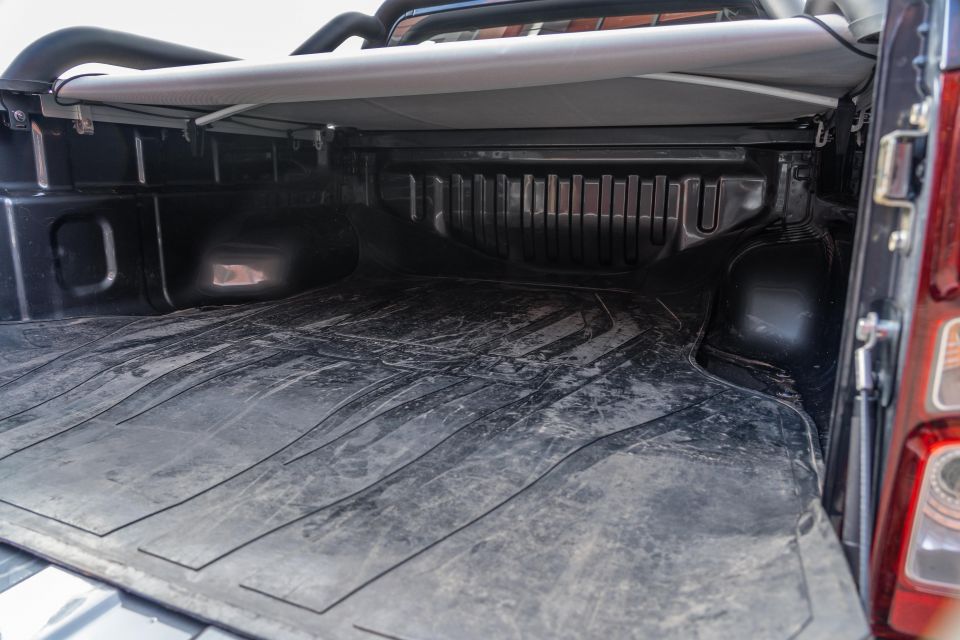
Anyone who wants to fit a child seat will need to be patient. As is the case in most of these dual-cab utes, the fact the top tether point is up against the rear bulkhead makes it hard to attach a finicky seat anchor.
We loved the inclusion of a hook behind the passenger seat for shopping bags and other bits and pieces that have a habit of flying around the cabin.
| Dimensions | Isuzu D-Max X-Rider |
|---|---|
| Length | 5285mm |
| Width | 1870mm excl. mirrors |
| Height | 1790mm |
| Wheelbase | 3125mm |
| Tub length | 1495mm (top) 1570mm (floor) |
| Tub width | 1530mm (maximum) 1122mm (between arches) |
| Tub depth | 490mm |
To see how the D-Max stacks up against its rivals, compare it using our comparison tool.
There are no changes to the engine in the D-Max between the pre- and post-update cars.

| Model | Isuzu D-Max X-Rider |
|---|---|
| Engine | 3.0L 4cyl turbo-diesel |
| Power | 140kW @ 3600rpm |
| Torque | 450Nm @ 1600rpm |
| Transmission | 6-speed automatic |
| Driven wheels | Part-time four-wheel drive (2H, 4H, 4L) |
| Weight | 2055kg (kerb) |
| Payload | 1045kg |
| Gross vehicle mass (GVM) | 3100kg |
| Towing capacity | 3500kg (braked) 750kg (unbraked) |
| Gross combined mass (GCM) | 6000kg |
| Fuel economy – claimed | 8.0L/100km |
| Fuel tank size | 76 litres |
| Fuel requirement | Diesel |
To see how the D-Max stacks up against its rivals, compare it using our comparison tool.
Very little has changed in the D-Max from behind the wheel, which is mostly a good thing.
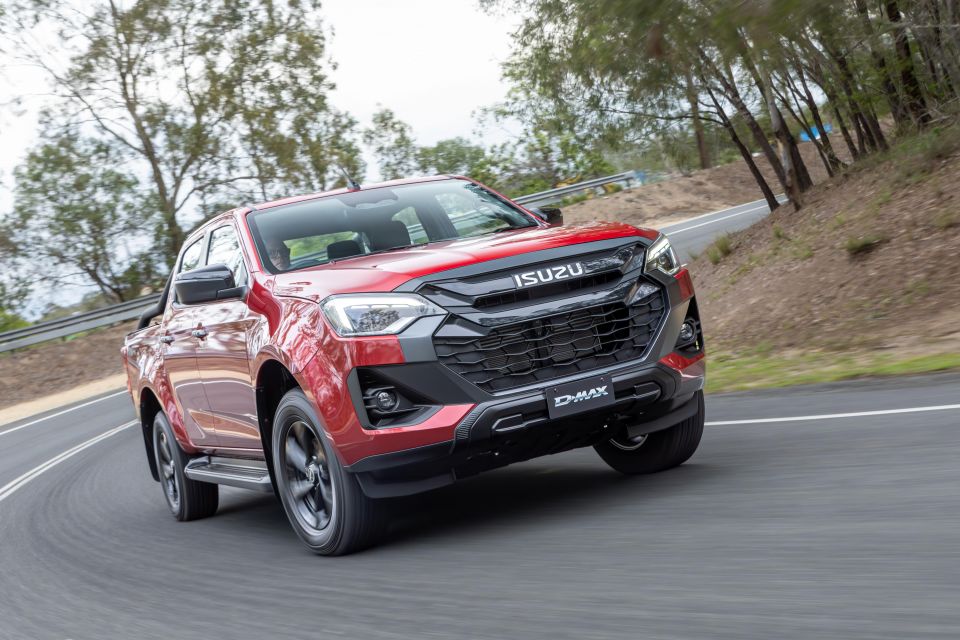
The engine remains a winner, at least alongside its four-cylinder rivals.
It’s still a bit clattery on startup, but the 3.0-litre turbo-diesel engine is smooth and quiet enough at low speeds to feel pretty refined by dual-cab standards.
Peak torque comes on tap at just 1600rpm and sticks around until 2600rpm, so performance is strong off the mark. It stays linear as the revs build, offering exactly what the driver wants, when they want it.
With 300Nm of torque still on tap at 4000rpm, it also doesn’t run out of puff as the mid-range bleeds into the top end. Slightly dampening the appeal of this engine is the 3.0-litre V6 on offer in the Ford Ranger and Volkswagen Amarok.

It stacks up well against four-cylinder rivals like the Triton, but the $6000 jump to a Ranger XLT V6 is tantalising if it’s pure punch you’re after.
Mated to the engine is a smooth-moving six-speed automatic. It’s unobtrusive most of the time, shuffling smartly through gears when you’re cruising around town.
The result is a ute that feels confident and, by virtue of the fact it’s not constantly changing its mind about the best gear on light throttle, smooth on the move. It’s also smart enough to drop a gear going downhill to take advantage of the engine braking.
With light steering and solid all-round vision, the D-Max is easy to place in town. The parking sensors work with a (still average) reversing camera to offer a decent picture of what’s going on around you, banishing memories of what was required in the previous model.

Ride quality is pretty good when there’s nothing in the tray. This isn’t an X-Terrain; it has a payload of more than one tonne, and shares chunks of its interior with hard-wearing fleet models. It’s not a bouncy mess though, with enough compliance to sit more on the SUV with a tray end of the ute spectrum.
There’s a hint of sharpness over potholes or speed bumps, but the rear end settles quickly, and never feels like it wants to wander off in a separate direction to the nose.
The low-speed talent doesn’t make the D-Max feel flighty at highway speeds. It’s confidence-inspiring on the open road, and the relative lack of wind and road noise means it’s one of the better dual-cab utes in which to while away time on the open road.
We’ve previously loaded 650kg into the rear of the D-Max. Although the engine has to work harder the ride settles down with more weight over the rear axle, and there’s no awkward squatting with a load on board.

As before, 4×4 versions of the D-Max feature 2H, 4H, and 4L models for their four-wheel drive systems. That means you need to be on an unsealed surface to activate it, unlike in the new Mitsubishi Triton or Ford Ranger V6 with their 4A modes.
The big news when it comes to off-roading is the addition of Rough Terrain mode, which tweaks how traction control system works.
Previously, we’ve found the D-Max can struggle to put its power down when it has one wheel in the air; the new Rough Terrain setup solves that problem.
Otherwise, we’ve found this is a solid off-roader. The inclusion of a rear differential lock was welcome with this new-generation car, although in our testing we’ve previously found the hill descent control system is prone to occasionally letting the vehicle’s momentum get away.
On test is the mid-spec D-Max X-Rider, which was previously a limited-edition model but is now a permanent part of the range with the latest update.




D-Max LS-U highlights:
D-Max LS-M adds:


Where expert car reviews meet expert car buying – CarExpert gives you trusted advice, personalised service and real savings on your next new car.
D-Max X-Rider adds:
The Isuzu D-Max wears a five-star ANCAP safety rating, based on testing conducted in 2020.
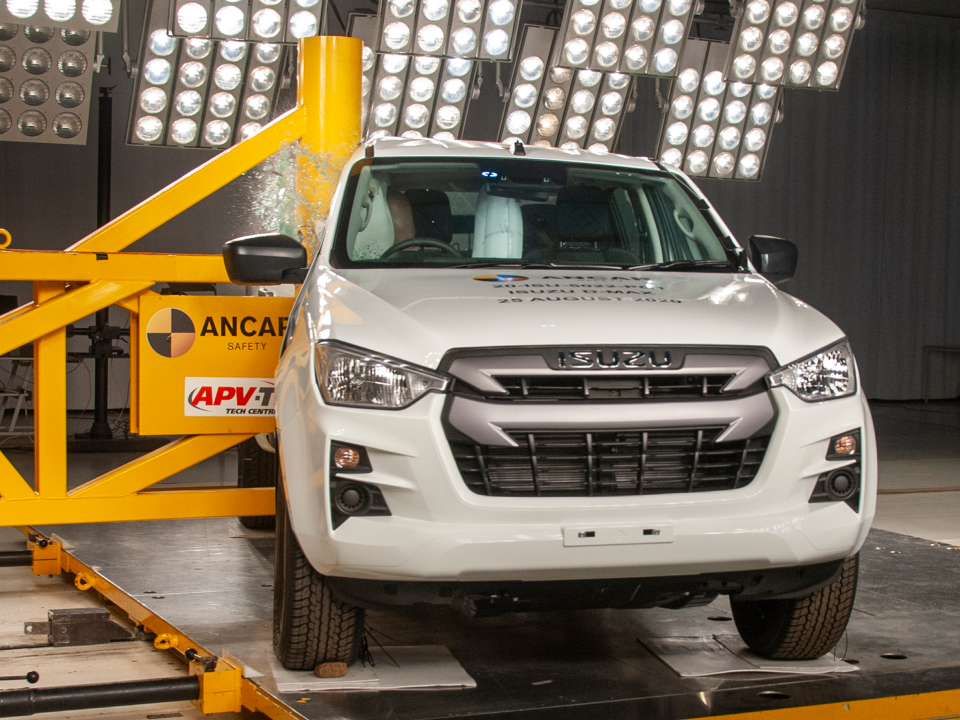
| Assessment | Isuzu D-Max |
|---|---|
| Adult occupant protection | 33 out of 38 (86 per cent) |
| Child occupant protection | 44 out of 49 (89 per cent) |
| Vulnerable road user protection | 37.63 out of 54 (69 per cent) |
| Safety assist | 13.49 out of 16 (84 per cent) |
It received a design change to the driver’s knee airbag and instrument panel in July 2022 and was re-tested, maintaining its five-star rating.
Standard safety equipment includes:
Automatic models also add wrong-pedal acceleration warning. LS-M Ute variants add rear parking sensors, LS-U and up add tyre pressure monitoring, and front parking sensors are reserved for the flagship X-Terrain.
The Isuzu D-Max covered by a six-year, 150,000km warranty. When you service on schedule at an Isuzu dealer, up to seven years of roadside assistance is offered.
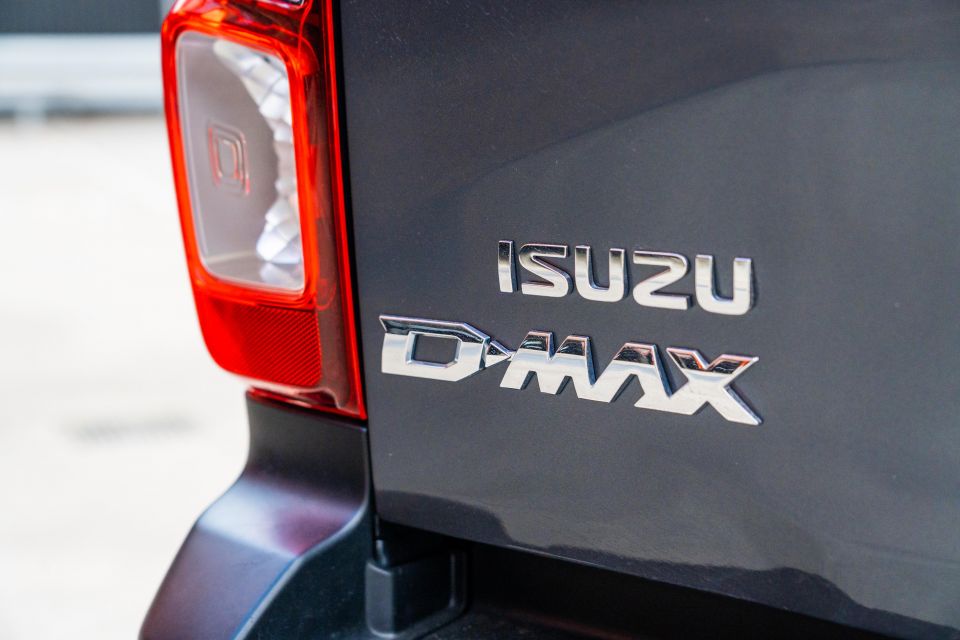
Logbook servicing is required every 12 months or 15,000km, whichever comes first, apart from a complimentary three-month service.
Isuzu D-Max service pricing:
| Service | Price |
|---|---|
| 3 months or 3000km | Free |
| 12 months or 15,000km | $449 |
| 24 months or 30,000km | $449 |
| 36 months or 45,000km | $449 |
| 48 months or 60,000km | $449 |
| 60 months or 75,000km | $449 |
Buy your new car without the stress. It's fast, simple and completely free.

Great service from Travis and team, second time I have used this business would not hesitate to recommend them to anyone
Craig C.
Purchased a Ford Ranger in Sunshine Coast, QLD
CarExpert helped Craig save $7,224 on his Ford Ranger, now let us save you on your next new car.
Get your BEST priceThe D-Max remains a strong performer in the crowded ute world.
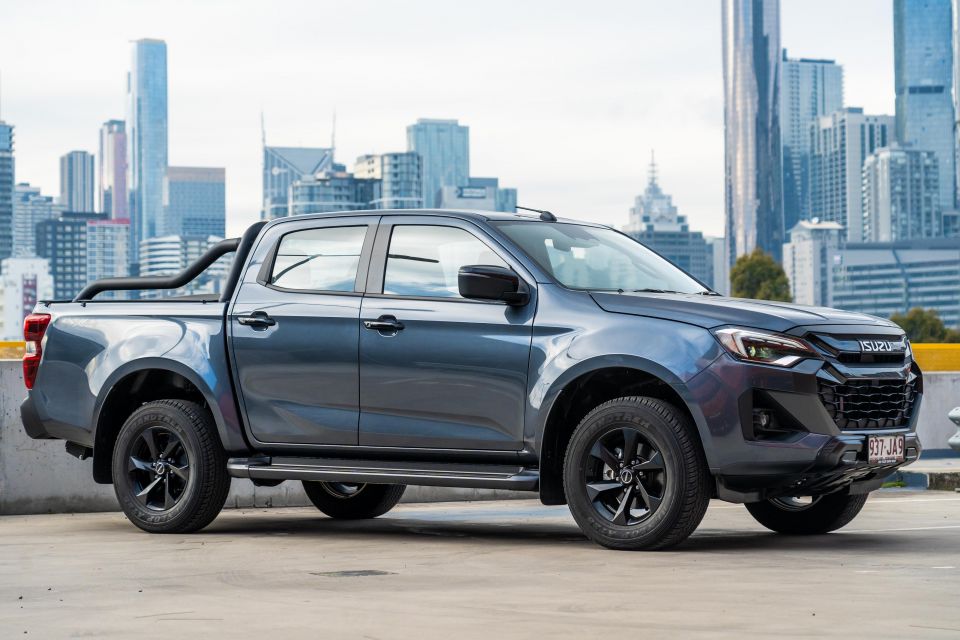
It neatly blends refinement with the sort of rugged appeal dual-cab buyers demand, and the latest update brings meaningful improvements to the cabin technology.
The X-Rider looks tough, and it’s sharply priced alongside lower-end versions of the Ford Ranger and Toyota HiLux – along with mid-level takes on the Mitsubishi Triton, which is no longer the knockout value option it once was.
There’s still room for improvement. Little things like the manual air-conditioning pod and plastic steering wheel seem like cheap upgrades that’d further elevate the car.
If you’re a ute buyer with some money to spend, but can’t quite stretch to the top end of the range the X-Rider is appealing.
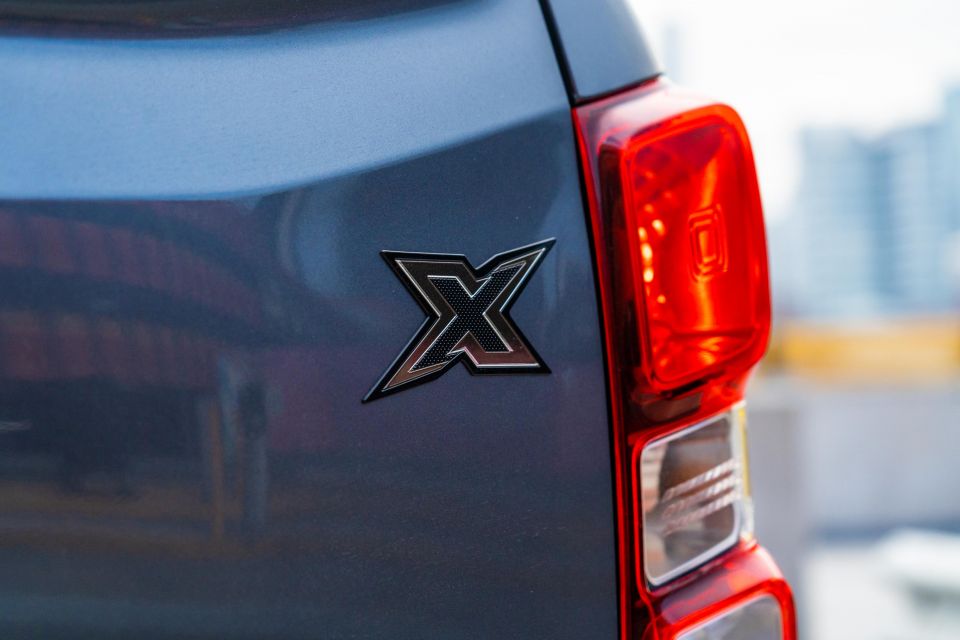
Click the images for the full gallery
MORE: Buy an Isuzu D-Max MORE: Everything Isuzu D-Max
Where expert car reviews meet expert car buying – CarExpert gives you trusted advice, personalised service and real savings on your next new car.
Scott Collie is an automotive journalist based in Melbourne, Australia. Scott studied journalism at RMIT University and, after a lifelong obsession with everything automotive, started covering the car industry shortly afterwards. He has a passion for travel, and is an avid Melbourne Demons supporter.


Paul Maric
27 Days Ago


Max Davies
22 Days Ago


Josh Nevett
14 Days Ago
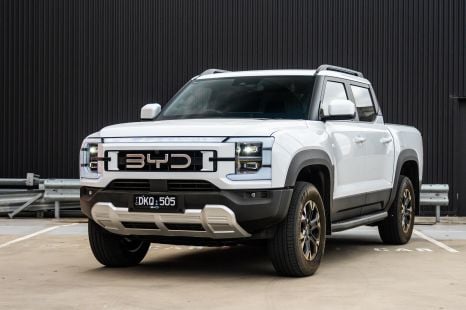

William Stopford
12 Days Ago


Max Davies
8 Days Ago


James Wong
6 Days Ago